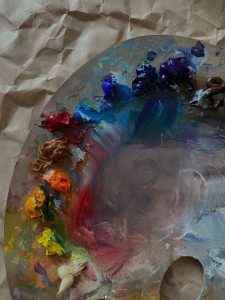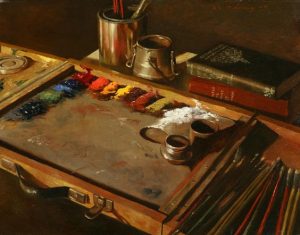Tracy Chevalier’s Girl With a Pearl Earring accomplishes something with its writing that few authors have truly mastered. It exemplifies color and vivid imagery through words in such a way that we can practically see them in front of us. Chevalier uses language that—no pun intended—paints the scene before us. She dedicates such time and care to dissecting the colors of this world, showing them to the reader through Griet’s eyes.
The characters themselves explore their own relationship with color, particularly Griet. Going from the way she organizes her vegetables to seeing the blues, yellows, and greens of the clouds. Additionally, Chevalier employs a timeless strategy of comparing colors to objects the reader can easily envision.
Griet’s relationship with color and art is one of the important parts of her journey working for Vermeer. He teaches her about all the colors around her at all times, opening her world to an entirely new sector of life. Along with color, we see a running theme of light and shadow. Chevalier uses these themes, taking us along through Griet’s eyes to step into 1665 Delft ourselves. I could feel myself in that star as the world around Griet was described so richly.
 The way the paintings are described is the most poetic to me. The language Chevalier uses conveys the sort of feeling a Vermeer evokes. To capture the style of a true master of a visual craft in words is incredibly skillful, to say the least. It was the assortment of colors, lights, and shadows that constructed the most magnificent parts of this book. The reader is brought with Griet to learn about all the colors her, and our, world have to offer us.
The way the paintings are described is the most poetic to me. The language Chevalier uses conveys the sort of feeling a Vermeer evokes. To capture the style of a true master of a visual craft in words is incredibly skillful, to say the least. It was the assortment of colors, lights, and shadows that constructed the most magnificent parts of this book. The reader is brought with Griet to learn about all the colors her, and our, world have to offer us.